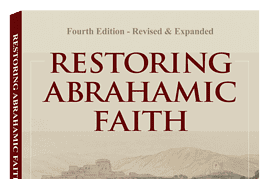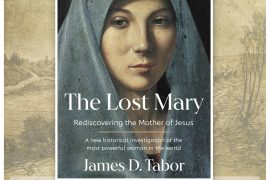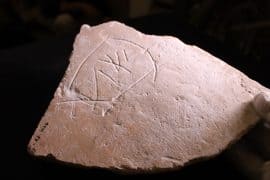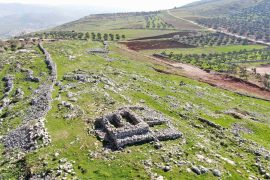Many of my readers perhaps have seen the news yesterday of what could well be the oldest proto-Hebrew inscription ever found in Israel. Below are links to two of the main news stories, the formal press release, and the video from the press conference yesterday (March 24th) at the Lanier Theological Library in Houston, Texas. The Associates for Biblical Research (ABR) announced the discovery. I thank archaeologist Scott Stripling, who works at Shiloh, but leads the sifting project of the late Adam Zertal’s excavation soil at Mt. Ebal near Shechem (Nabulus) for these links. At this point not much more is known, although Scott’s formal publication is greatly anticipated and should be out by summer. Many academics are reluctant to say anything further so far as evaluation as to provenance, dating, and paleographic or historical significance. I would like to add here though that the wet sifting and floatation processes used by the Shiloh team on Zertal’s soil removed from Ebal is a completely legitimate and important aspect of field work in archaeology today. We use it routinely at Mt Zion and it has allowed us to not just to “find” objects that would have been discarded, but to do much finer evaluation of a given strata or layer–for example our Medieval market areas at our dig site evidenced by the egg shells, fish bones, metal hooks, and additional organic materials–known previously only in literary sources. Or siege weapons from Saladin’s southern attack on Jerusalem.
There was an earlier report of this find in the Jerusalem Post that I remember seeing–just looked it up–from January, “Ancient Hebrew Amulet Discovered at Joshua’s Altar in Samaria.”
Two other observations. The team conducting these tests and evaluations are well qualified, as are the labs carrying out the examinations. Also, whether or not the excavators hold conservative “Maximalist” views of the Hebrew Bible and its composition is irrelevant to the artifact and its contents, dating, and epigraphical evaluation. It is a treasured and important find.
Chris Rollston, one of the most respected epigraphers in the field of ancient Semitic inscriptions, weighs in with some preliminary methodological cautions here: “The Mount Ebal Lead ‘Curse’ Inscription in Late Bronze Age Hebrew: Some Methodological Caveats.”

Times of Israel, “Archaeologist claims to find oldest Hebrew Text in Israel including the Name of God”
The Jerusalem Post “Researchers decipher oldest known Hebrew inscription on ‘cursed’ Tablet”
UPDATED-Press-Release_Ebal_Final









Comments are closed.